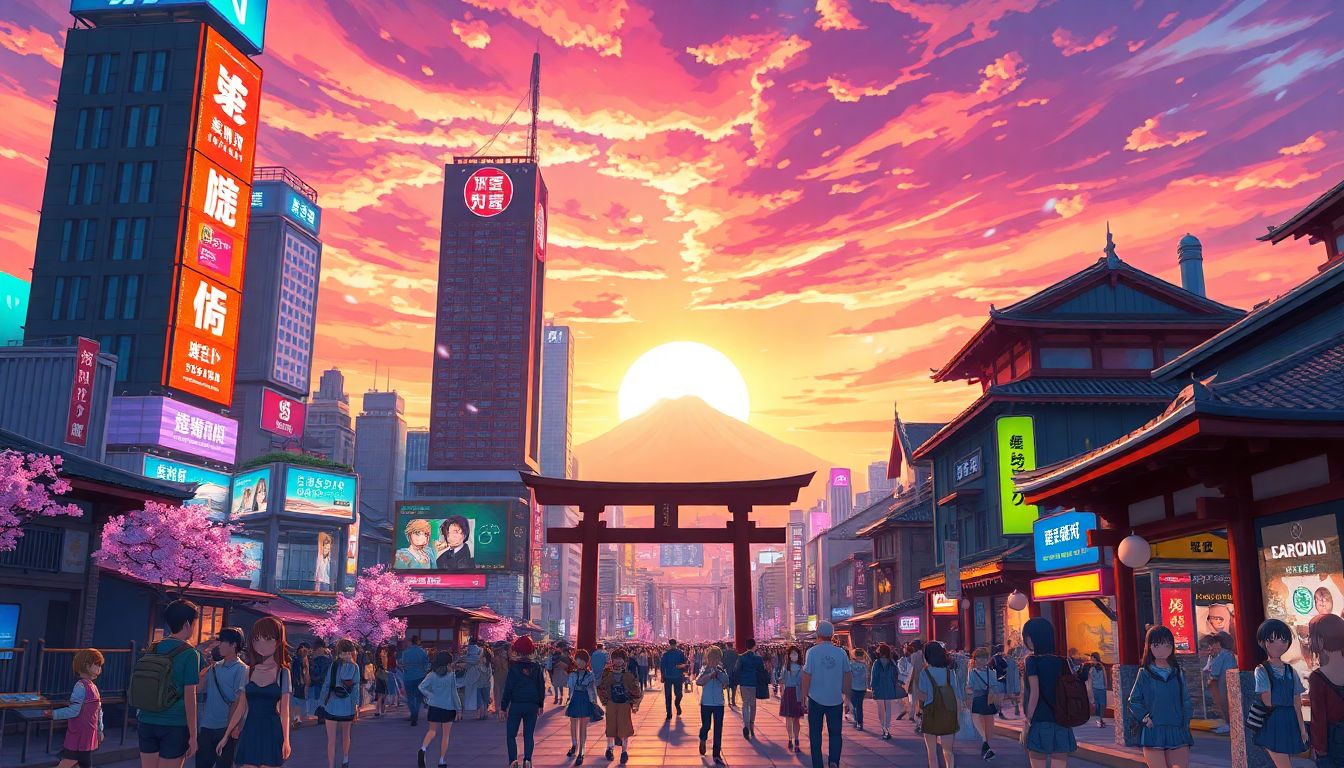Introduction
Anime has exploded around the world in recent years. Viewership numbers skyrocket, merchandise sales hit record highs, and conventions draw thousands of fans. What was once a niche Japanese entertainment form is now a global craze. Now, anime isn't just on screens—it’s a full-blown culture with a thriving industry worth billions. This article explores how animation from simple pixels has turned into a lively "anime wonderland" filled with collectibles, immersive experiences, and big communities. Get ready to see how anime grew from a modest art form to a worldwide phenomenon.
The Evolution of Anime: From Digital Pixels to Iconic Characters
Early Beginnings of Anime
Anime started in Japan during the early 20th century. The earliest cartoons paved the way for what would become a rich tradition. Classic titles like "Astro Boy" set standards for storytelling and style. Studios such as Toei Animation and Studio Ghibli helped define anime’s roots. These pioneers made anime popular at home and laid the groundwork for its international success.
Technological Advances and Animation Quality
As technology advanced, so did anime visuals. The move from traditional hand-drawn cels to computer-generated imagery changed everything. CGI and 3D models brought new depth and beauty to anime. Today’s shows, like "Demon Slayer," wow viewers with detailed backgrounds and fluid movements. These improvements keep fans glued to their screens and push the art form forward.
From Screen to Shelf: Anime as a Cultural Export
Anime is more than just TV shows now. It's a major cultural export for Japan. Companies license popular titles worldwide, and streaming platforms like Crunchyroll and Funimation make shows accessible everywhere. International viewership has shot up by huge percentages in recent years, with many countries adopting anime as part of their pop culture. The global spread helps anime stay fresh and exciting to new audiences.
The Rise of Anime Merchandise: Building the Wonderworld
Anime Figures and Statues
Collectible figures lead the way in anime merchandise. PVC figures, detailed scale models, and limited editions are highly sought after. Franchises like "Pokémon," "Naruto," and "One Piece" drive the market. The global merchandise industry now worth billions continues to grow as fans buy more collectibles. Many fans display their favorite characters proudly at home.
Clothing, Accessories, and Lifestyle Products
Anime-themed shirts, backpacks, and even home decor are everywhere now. Major brands collaborate with anime creators, blending pop culture with fashion. Fans often buy authentic items to show off their favorite series while avoiding counterfeits. These products let fans turn their obsession into everyday style.
Digital Collectibles and NFTs
In recent years, digital assets like NFTs have entered the anime scene. Fans can now buy unique digital art and collectibles based on popular characters. While controversial, NFTs offer new ways for fans and collectors to own a piece of their favorite anime universe. As these digital items grow in popularity, they add an innovative layer to anime collecting.
Immersive Experiences: From Virtual Worlds to Conventions
Anime-themed Virtual Reality and Gaming
VR and video games put fans right into their favorite anime worlds. Titles like "Sword Art Online" fully immerse players in virtual adventures, while games like "Genshin Impact" feature anime-style graphics. These experiences deepen fans' connection, making them feel part of the story. Gaming is now a key way fans interact with anime brands.
Conventions and Fan Events
Big conventions like Anime Expo, Comiket, and Anime Festival Asia attract thousands annually. Fans dress up in cosplay, attend panels, and buy exclusive merchandise. These events create tight-knit communities while boosting local economies. For many fans, conventions become a yearly highlight and favorite way to connect.
The Future of Anime Experiences
The future is bright with new tech like augmented reality (AR) making shows more interactive. Some companies experiment with live virtual performances featuring anime characters. Fans may soon participate in personalized, interactive experiences that blur the line between screens and real life. The goal? Make the fan experience more vivid and memorable.
Challenges and Opportunities in the Anime Wonderland
Industry Challenges
The industry faces problems like piracy and intellectual property theft. Market saturation and fierce competition also make it hard for new titles to stand out. Growth depends on maintaining originality while protecting creators’ rights. Finding balance is key to sustainable success.
Opportunities for Innovators and Entrepreneurs
Innovators can use AI to improve animation or create faster production processes. Expanding anime's reach into new markets and languages also opens doors. Developing fresh merchandise ideas and new ways for fans to engage will keep the industry thriving. Creativity and tech are the twin engines of future growth.
Conclusion
Anime has come a long way—from simple cartoons to a vibrant world filled with collectibles, immersive tech, and lively fan communities. The industry thrives on innovation, authenticity, and passion. As it continues growing, anime’s magic will keep enchanting fans worldwide. With new storytelling tools and merchandise, the "anime wonderland" promises to stay exciting for generations to come. Dive into this world—because the adventure is just beginning.



Comments ()